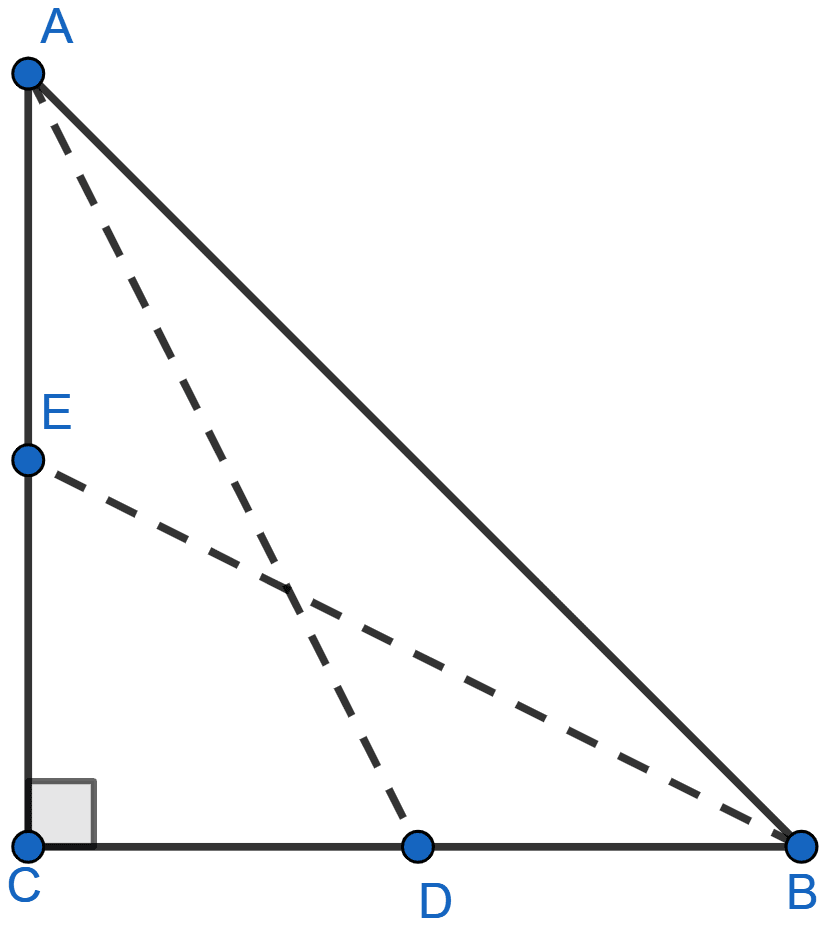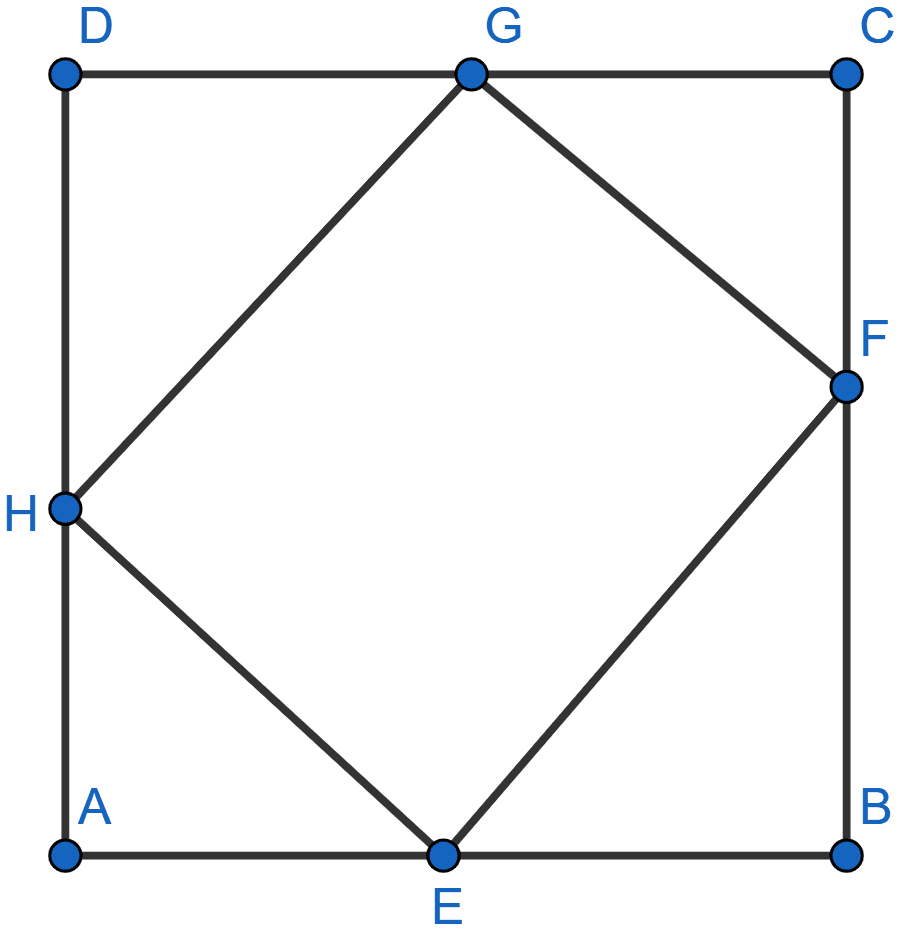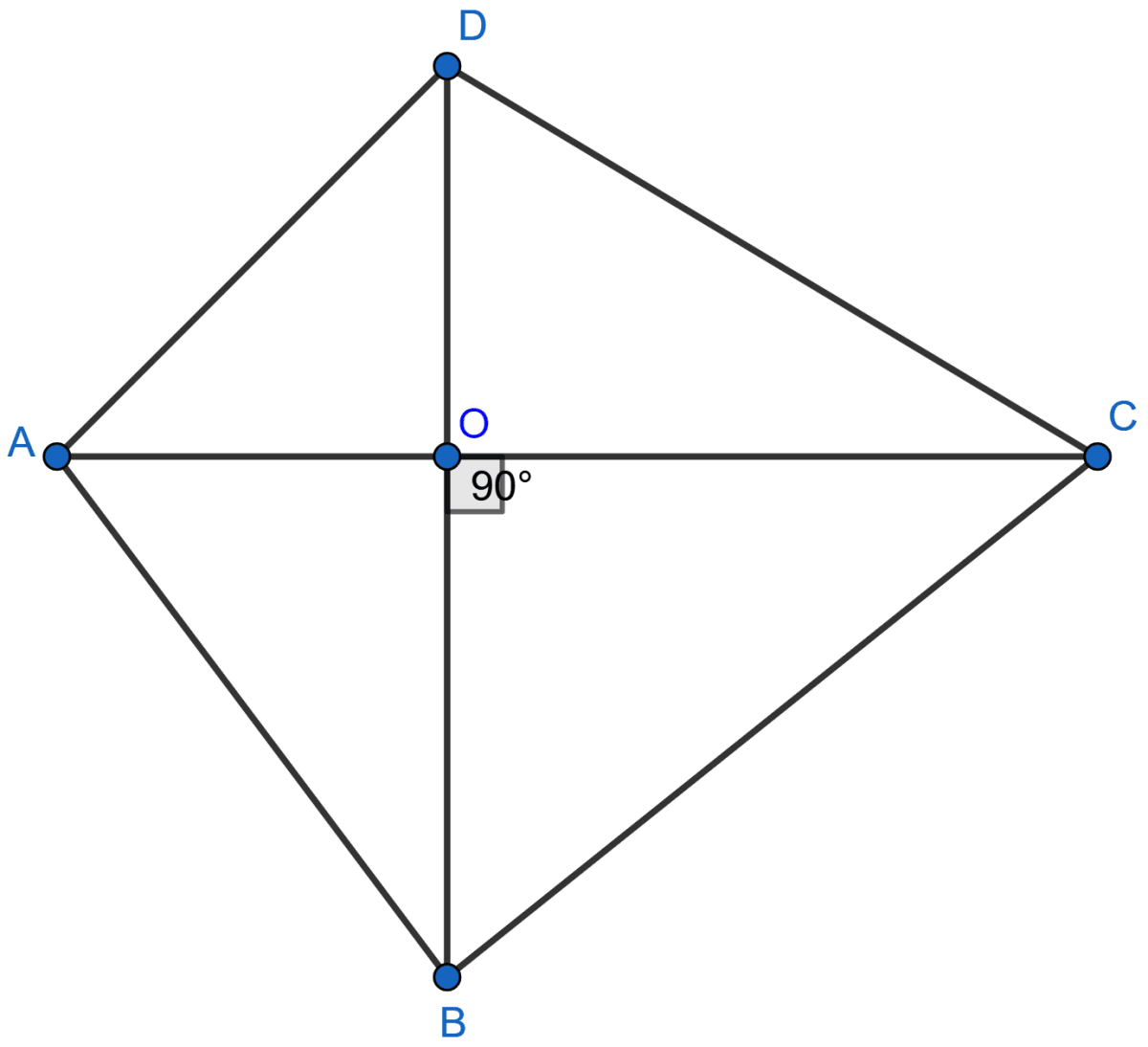Mathematics
In the adjoining figure, D and E are mid-points of the sides BC and CA respectively of a △ABC, right angled at C. Prove that :
(i) 4AD2 = 4AC2 + BC2
(ii) 4BE2 = 4BC2 + AC2
(iii) 4(AD2 + BE2) = 5AB2

Pythagoras Theorem
68 Likes
Answer
(i) Since, D is mid-point of BC,
∴ CD =
In right triangle ACD,
By pythagoras theorem,
⇒ AD2 = AC2 + CD2
⇒ AD2 = AC2 +
⇒ AD2 = AC2 +
⇒ AD2 =
⇒ 4AD2 = 4AC2 + BC2 …..(1)
Hence, proved that 4AD2 = 4AC2 + BC2.
(ii) As E is mid-point of AC,
∴ CE =
⇒ AC = 2CE
BCE is right triangle,
By pythagoras theorem,
⇒ BE2 = BC2 + CE2
Multiplying both sides by 4 we get,
⇒ 4BE2 = 4BC2 + 4CE2
⇒ 4BE2 = 4BC2 + (2CE)2
⇒ 4BE2 = 4BC2 + AC2 ……(2)
Hence, proved that 4BE2 = 4BC2 + AC2.
(iii) As, ABC is a right triangle,
By pythagoras theorem we get,
⇒ AB2 = AC2 + BC2
Adding 1 and 2 from above parts we get,
⇒ 4AD2 + 4BE2 = 4AC2 + BC2 + 4BC2 + AC2
⇒ 4(AD2 + BE2) = 5AC2 + 5BC2
⇒ 4(AD2 + BE2) = 5(AC2 + BC2)
⇒ 4(AD2 + BE2) = 5AB2.
Hence, proved that 4(AD2 + BE2) = 5AB2.
Answered By
47 Likes
Related Questions
In the figure given below, ABCD is a square of side 7 cm. If
AE = FC = CG = HA = 3 cm,
(i) prove that EFGH is a rectangle.
(ii) find the area and perimeter of EFGH.

AD is perpendicular to the side BC of an equilateral △ABC. Prove that 4AD2 = 3AB2.
If AD, BE and CF are medians of △ABC, prove that
3(AB2 + BC2 + CA2) = 4(AD2 + BE2 + CF2).
In the adjoining figure, the diagonals AC and BD of a quadrilateral ABCD intersect at O, at right angles. Prove that AB2 + CD2 = AD2 + BC2.
